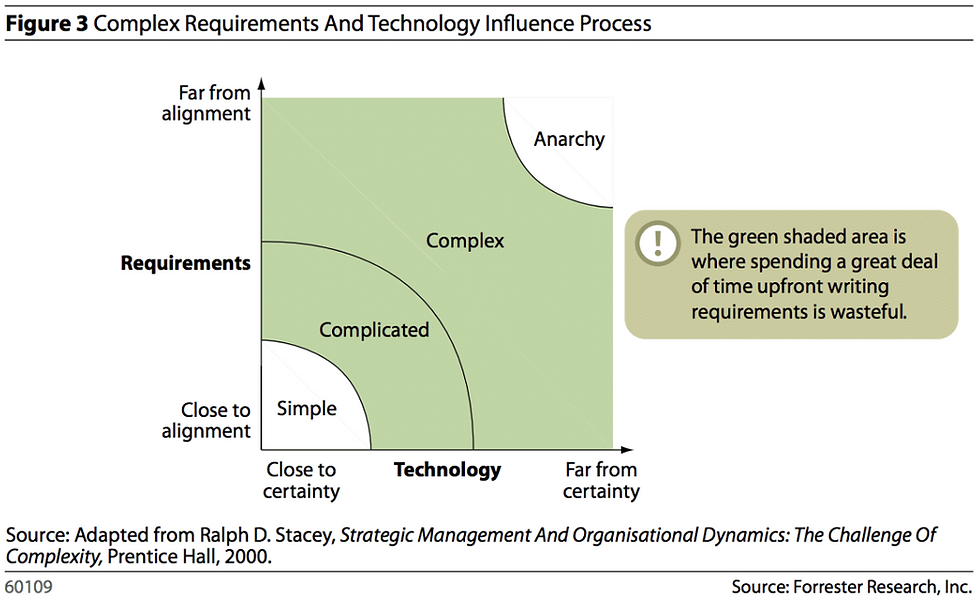Why Your CRM Project May Fail Without a Dependency Map—And What Database Theory Can Teach Us
- Violet Swierkot
- Jun 11
- 3 min read

In 2025, organisations are increasingly aware that CRM and digital systems don’t operate in isolation—they exist within complex ecosystems of business processes, third-party tools, legacy infrastructure, and human workflows. Yet, too many projects still treat implementation as a modular rollout, failing to examine underlying dependencies that govern how the system truly behaves.
This oversight can derail even well-funded projects. Missed dependencies lead to:
Incomplete or failed data migrations
Broken reporting logic
Ineffective automations
Business disruption and reputational damage
But what if we had a way to systematically reason about these dependencies—not just from a technical standpoint, but from a logical and domain-aware perspective?
Enter the theory of Constraint-Generating Dependencies (CGDs) by Baudinet, Chomicki, and Wolper (1999).
From Traditional Dependencies to Interpreted Domains
Classic database design relied on equality-based dependencies—“if A = B, then C = D.” But modern digital systems require reasoning over interpreted domains:
“If a user’s role hierarchy level is greater than 3, then grant access to module X.”
“If Project Go-Live < Today, trigger archive process.”
“If Supplier Region ≠ Client Region, apply offshore tax logic.”
These are no longer just technical linkages—they’re semantic constraints that live in interpreted domains like time, arithmetic, logic, and business rules. Baudinet et al.’s CGDs allow for formal expression and checking of these constraints—transforming dependency management from tribal knowledge into a formal, verifiable model.
A few core database theories can act like your backstage crew—quietly powerful and absolutely essential:
Normalization Theory – This is your blueprint for structuring CRM data efficiently. It helps eliminate redundancy and ensures consistency by organizing data into related tables through normal forms (1NF to 5NF and beyond). It's all about clean, predictable relationships—music to any CRM's ears.
Dependency Theory – Specifically, functional and transitive dependencies. Understanding which fields rely on others (e.g., a contact's city depending on their postcode) helps you detect hidden relationships that could undermine your system's integrity.
Relational Algebra and Set Theory – These provide the formal foundation for querying data. They might sound abstract, but when you’re designing or optimizing CRM reports and segmentation, they’re what make those queries sing.
Entity-Relationship (ER) Modeling – Mapping out entities and their relationships is vital before you even build your system. In CRM terms, think customers, interactions, opportunities—and how they all interconnect.
ACID Properties and Transaction Theory – Especially if your CRM handles real-time updates across multiple users or systems. You want Atomicity, Consistency, Isolation, and Durability to keep things tidy when the pressure's on.
Denormalization (yes, the flip side) – Sometimes, for performance or simplicity, you might intentionally duplicate data. This must be strategic and well-informed by your knowledge of normalization and dependencies
Why This Matters for CRM, ERP, and Digital Platforms
Most digital systems today:
Integrate with external data (HR, billing, support)
Depend on temporal rules (SLAs, retention policies)
Trigger domain-specific logic (e.g. GDPR compliance, financial thresholds)
CGDs give us the formal tools to ask:
“What happens if input A changes?”
“Which processes assume condition B always holds?”
“What chain of logic is disrupted when module C is delayed?”
These aren't just academic questions—they're risk management necessities.
Practical Takeaways for Digital Leaders
🔗 Map interpreted dependencies early. Don't wait for user UAT to discover logic breakdowns—document dependencies across domains, not just systems.
🧠 Augment your business rules with CGD logic. If your system depends on constraints like inequalities, temporal logic, or sequencing, treat them as first-class citizens.
⚙️ Challenge vendors to surface hidden dependencies. Ask:
"What constraints does this system rely on?"
"Where do these show up in your schema?"
"What happens if a related system changes behavior?"
📉 Document not just workflows—but constraint paths. Your Gantt chart might show task order, but CGDs model why certain transitions are logically necessary.
Bridging Theory and Practice
“While functional and equality-generating dependencies are well understood in relational theory, they fall short in expressive power for modern interpreted domains.”—Baudinet, Chomicki, & Wolper (1999)
In short, your CRM is more than a contact database. It’s a constraint engine interacting with a living data ecosystem.
Using CGD-inspired thinking lets you:
Prevent cascading failures
Improve query and automation accuracy
Strengthen regulatory and data integrity compliance
Design for future-proof adaptability
Closing Thought
The question isn’t “Does our system have dependencies?” It’s “Do we understand, map, and manage them—formally and early enough?”
With theories like CGDs and tools for constraint reasoning, we move from reactive fire-fighting to strategic, resilient system architecture. As digital systems grow more interconnected and data-intensive, this shift isn't optional—it’s inevitable.
Reference:Baudinet, M., Chomicki, J., & Wolper, P. (1999). Constraint-Generating Dependencies: Expanding Database Theory into Interpreted Domains. Academic Press.
#DigitalTransformation #CRMImplementation #SystemsThinking #DependencyManagement #DatabaseTheory #ConstraintLogic #DataIntegrity #SystemArchitecture #ProjectManagement #EnterpriseIT #CGD #TemporalLogic #AIReadyData #TechGovernance #ModernDataStack #BusinessAnalysis #ITStrategy #DataGovernance #ProjectRisk #InterpretedDomains



Comments